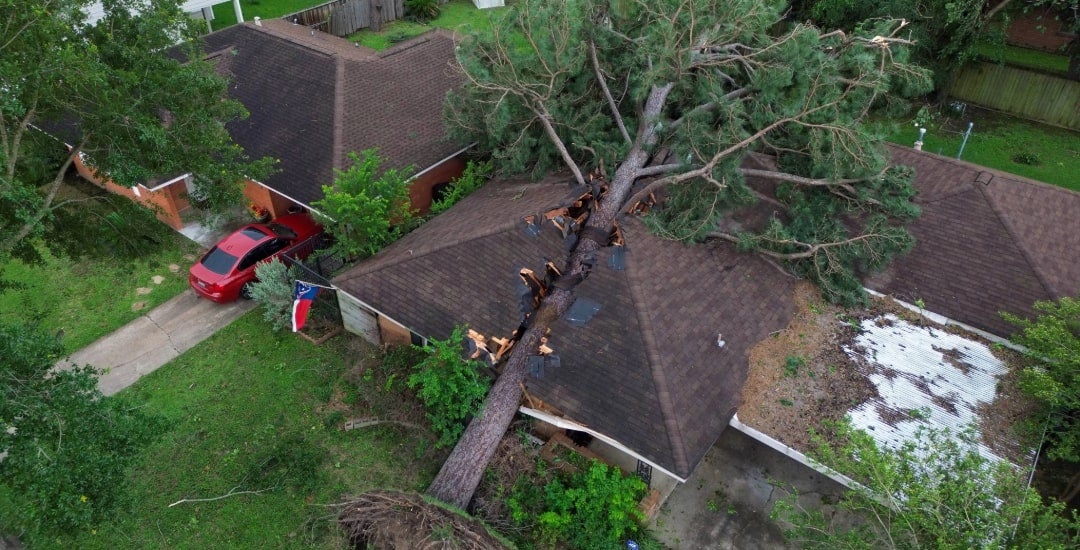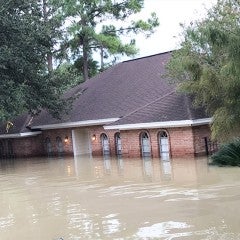“Our expensive housing system is uniquely vulnerable to a hostile climate,” said research scientist Steve Sherman during a webinar on Tuesday. “Residents with less means to respond to floods, less money to address the situation, are concentrated in flood-prone neighborhoods. Vulnerable people live in vulnerable places.”
The 2025 State of Housing in Harris County and Houston report, the sixth of its kind, indicated that more than 20% of all housing units in Harris County are in one of three major flood areas — floodways, the 100-year floodplain and the 500-year floodplain. They also found a strong connection between a neighborhood’s share of single-family homes in floodplains and that neighborhood’s poverty rate.
Panelists on the webinar included James Elliott, the David W. Leebron Professor of Sociology and co-director of the Center for Coastal Futures & Adaptive Resilience at Rice University; Elaine Morales-Díaz, the senior director of partnerships and policy at Connective; and Jeremy Porter, the head of climate implications research for First Street. They focused on the importance of climate data, how climate risks have impacted insurance costs, and potential policy solutions.
A consistent lack of affordability
Every edition of the State of Housing analysis has found that living in Harris County and Houston continues to become more expensive. Rent went up by 9% from 2022 to 2023, outpacing inflation and adding 15,000 more “cost-burdened” renters, those who spend more than 30% of their income on rent. Over 50% of renters in Harris County and Houston are cost-burdened, and more than 25% are “severely cost-burdened,” meaning they spend more than half of their income on rent.
While Harris County and Houston have added more homeowners, the median home price for both increased 3% from 2023 to 2024 (reaching $325,000 and $345,000, respectively). The affordability gap — the difference between the median home price and what a household making the median income can afford — continues to climb. A household earning the median income for Harris County could only afford a home priced $195,207 in 2024, while a household earning the median income for Houston could afford a home priced at $175,967.
The cost of homeowners insurance was $3,325 as of 2023, marking a 43% increase since 2015 and an 18% increase from 2022, another factor making homeownership a difficult prospect for many households.
Climate shocks and stresses
Last year was Houston’s hottest on record, according to National Weather Service data. The region also experienced a derecho in May and Hurricane Beryl in July. In January, parts of the area experienced up to 6 inches of snow.
Some residents’ homes are ill-equipped against this variety of climate-related shocks and stresses. In Harris County, almost 107,000 residential structures lack central air conditioning, and over 40,000 lack a conventional heat source.
“In a lot of cases, climate risk is important in terms of being a predictor of where folks are going to be impacted. But we can’t look at it in a vacuum,” Porter said. “We have to understand what the local conditions are in these communities, how people are adapting to those communities, and what the socioeconomic characteristics of the community is in terms of their ability to adapt.”
Morales-Díaz said health risks arising from inadequate housing in the face of extreme weather and the compounding effects of disasters are among the area’s top housing challenges.
“For those with medical conditions, children or older adults, lacking AC is life-threatening. Heat is the leading cause of weather-related deaths, making reliable cooling a critical public health issue,” Morales-Diaz said. “Our disaster risk exacerbates the pressures on our housing stock. With each storm, flood or freeze, more families are pushed into crisis.”
The State of Housing report also highlights the poor air quality plaguing the area. In 2021, the most recent year for which data is available, every neighborhood in Harris County failed to meet the Environmental Protection Agency’s standard for concentration of PM 2.5, which is particulate matter more than 2.5 microns in diameter. High concentrations are associated with harmful effects on health.
The report concluded that no single government entity or nonprofit organization can promote housing resilience alone — partnerships will be “absolutely necessary.”
Elliott added that sustained community engagement that looks beyond the short term is required.
“We’re going to need a lot of different approaches to this. One of those is going to be working with the communities in question. The risks that we’ve been talking about are immediate in the sense that we’re about to enter into a hurricane season, and it’s hot, so they feel real. But we need to engage in long-term planning,” he said.



